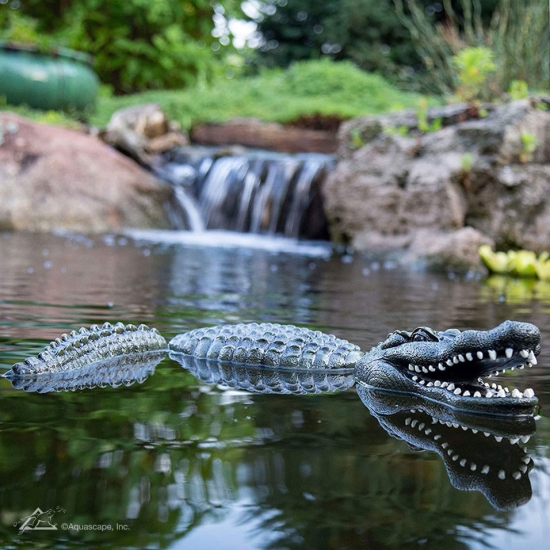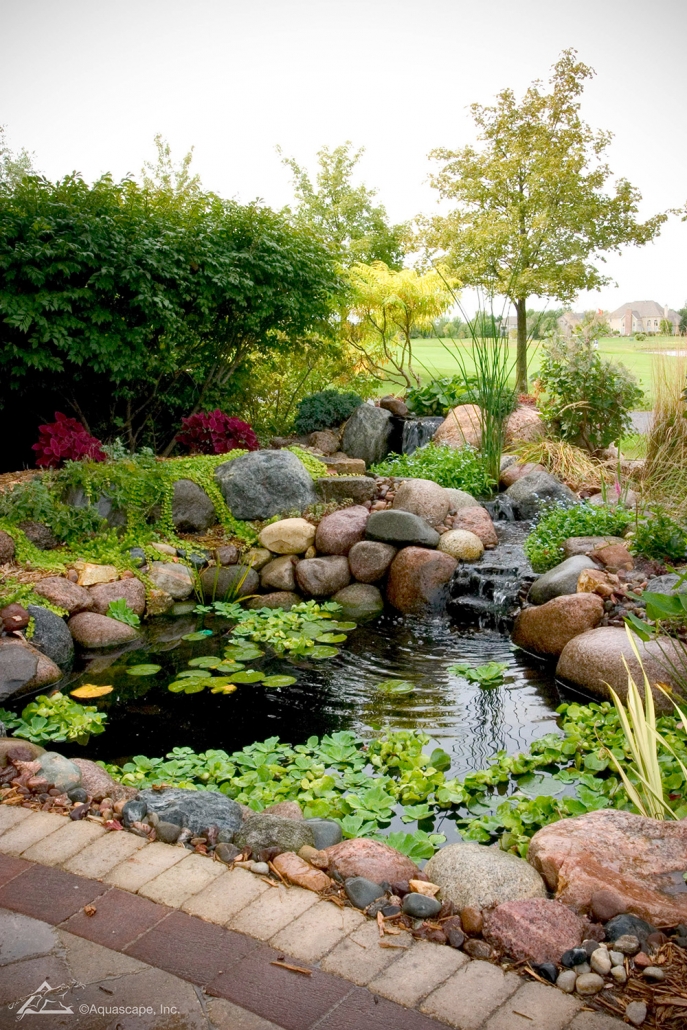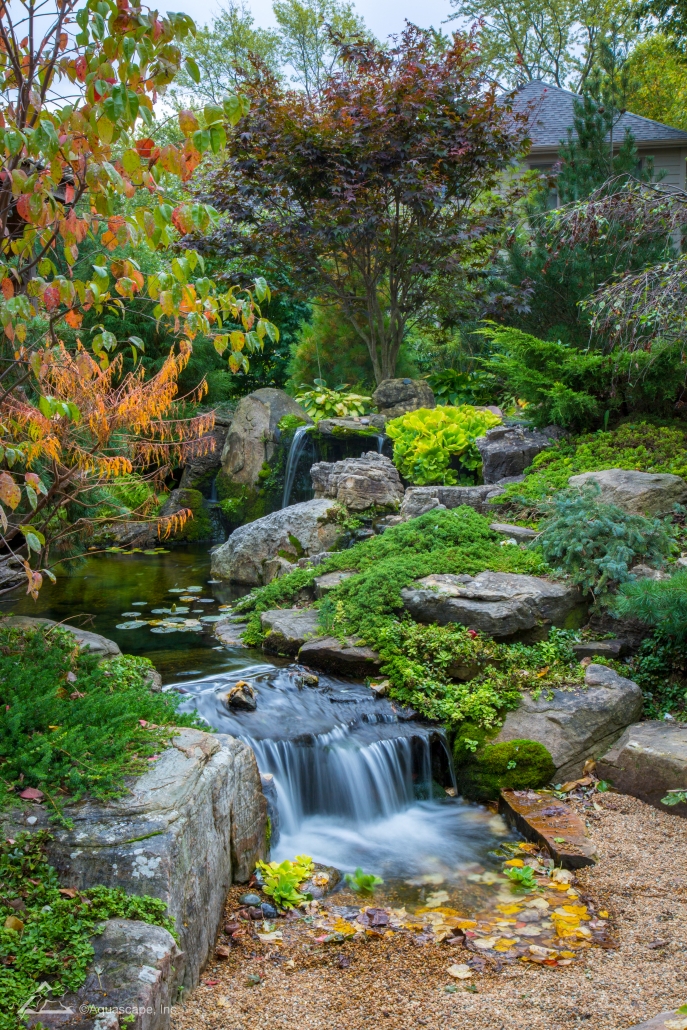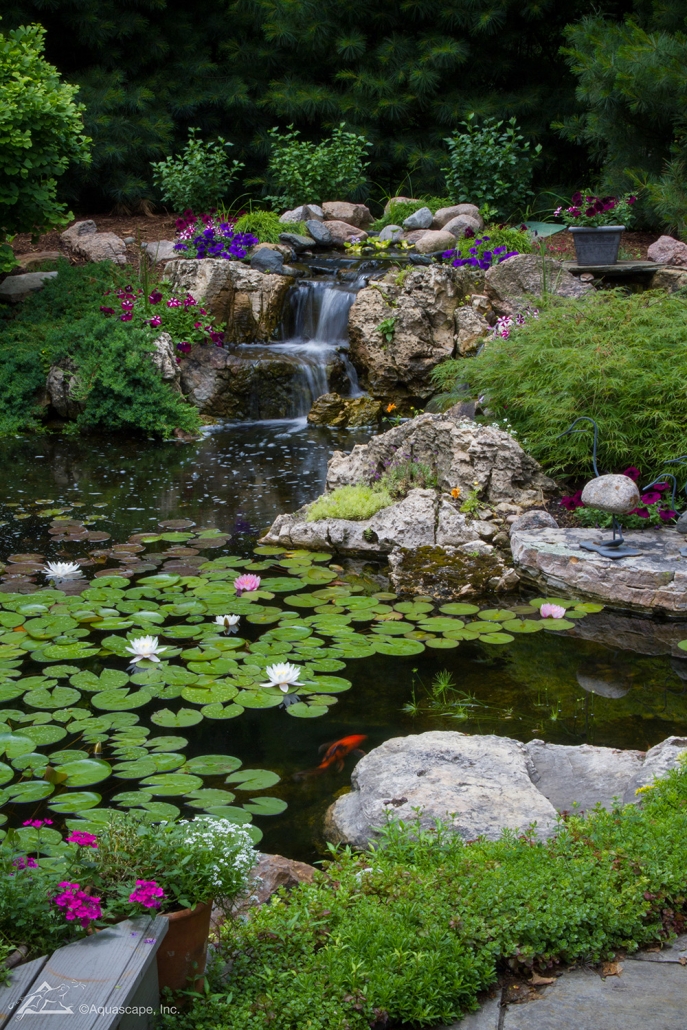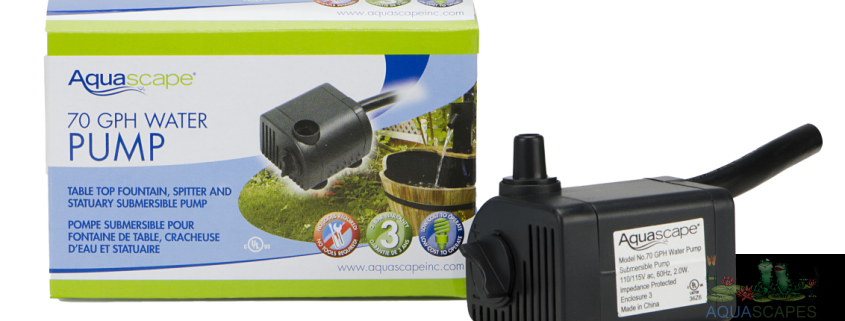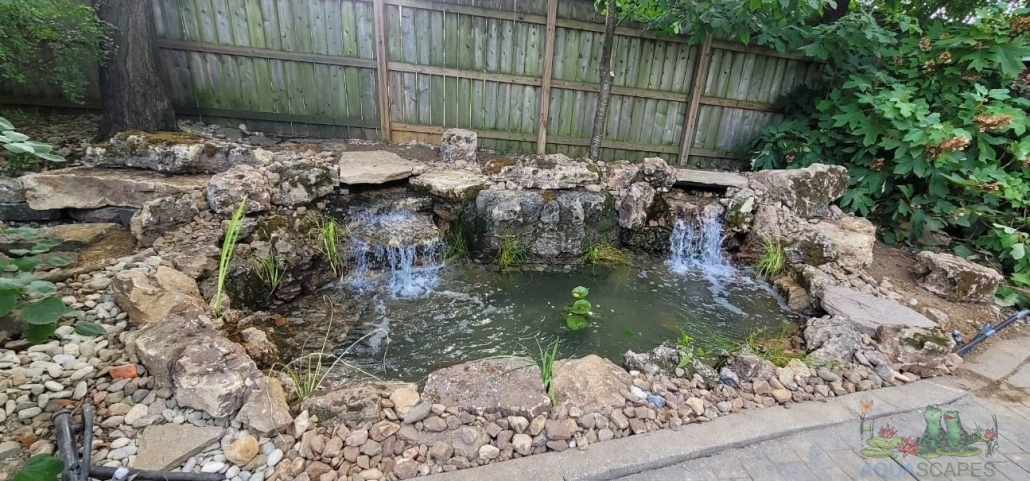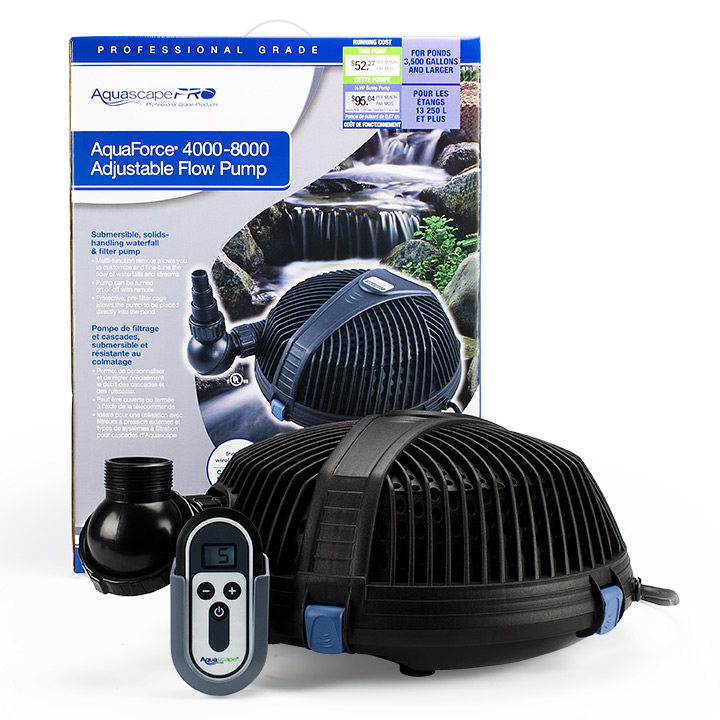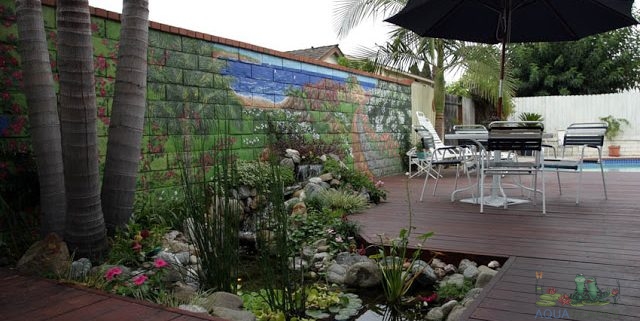How Long Does a Pond Pump Need to Be on Each Day?
A pond pump and a filter are necessary to maintain pond health. A well-maintained pond adds value to a home, and even though a large pond with fish requires more maintenance than a small pond, it is worth the extra effort, providing movement, color and a dramatic landscape element. A pond’s pump should run 24 hours each day to ensure the pond’s water circulates through the filter to keep the water clear.
Pump Function
A pond pump may be submerged in the pond’s water or sit outside the pond, depending on the pump type, but both types work in the same way. The pump uses spinning blades, known as impellers, to pull pond water through a screenlike intake and expel the water through an outlet pipe. Generally, a large pond has an external pump and a smaller pond or water garden has a submersible pump. Any kind of pump requires regular maintenance of its intake filter and screen to prevent clogging.
Pump Size
Before buying a pond pump, calculate your pond’s water capacity to determine the size of pump required to circulate all of the pond’s water through the pump every one to two hours. Formulas can help you determine your pond’s water capacity in gallons from pond measurements taken in feet. The formula for a rectangular pond is length x width x depth x 7.48 = gallons. For a circular pond, the formula is radius x radius x 3.14 x average depth x 7.48 = gallons. The formula for an irregularly shaped pond requires dividing the pond into easier-to-calculate shapes, figuring the water capacity in gallons for each of those shapes and then multiplying the total sum of those gallons by 231 instead of 7.48.
Operating Cost
A pond that has a pump or other electric equipment requires electricity, and so it will increase your monthly electric cost. Some pumps cost less to operate than other pumps. Reduce the cost of pump operation by using a pump that moves the necessary amount of pond water while using the least amount watts; a watt is a measurement of electrical usage. Calculate the cost of operating a pump by using this formula: Divide the watts by 1,000, and then multiply that figure by 24 hours, the number of days per operation and electricity cost. An example is: 300 watts/1000 x 24 hours x 30 days x 0.08 for electricity cost = $17.28 as the cost to run the pump for 30 days.
Other Considerations
Mosquitoes can be a problem when a pond is in the landscape, but mosquitoes lay eggs in only stagnant water. A pump can keep the pond water moving, deterring mosquitoes from laying eggs in the water. Even a small amount of moving water can prevent mosquitoes from laying eggs. So if a pump is not feasible, add a fountain bubbler to keep water moving.
How Many Watts Would a 2.5 HP Pump Use?
A pump helps circulate and filter the water in a pool. A pump’s horsepower determines how quickly the pump can process all the water. The goal is for the pump to sufficiently filter all the water in an 8 to 10 hour period, according to Aquascapes. Depending on the size and volume of your pool, you will need more or less horsepower to filter the water in that ideal time frame. Horsepower can be converted to watts, giving you a guesstimate of what your energy costs might be to run your pump.
Math Conversions
One horsepower is equal to 745.7 watts. When you multiply 745.7 watts by 2.5 hp, you get 1,864.25 watts. Energy costs are calculated in kilowatt-hours, and to get kilowatt-hours, you multiply watts by hours and divide by 1,000. So, if you run your pool pump for 8 hours in one day, 1,864.25 multiplied by 8 and divided by 1,000 equals 14.9 kilowatt-hours. If you run your pump every day for an average of 30 days per month — 30 multiplied by 14.9 — your pump uses 447 kilowatt-hours in a month.
All About Aquascape Submersible Water Pumps
All About Aquascape Submersible Water Pumps
In simple terms, an Aquascape Submersible Water Pump is a type of water pump that can be used to pumps water from one place to another. It is a very versatile and handy tool that can be used for various purposes such as irrigation, drainage, and even in aquariums.
Submersible water pumps are usually powered by electricity and they come in different sizes and designs. Some of the most common designs include centrifugal pumps, jet pumps, and diaphragm pumps.
When choosing a submersible water pump, it is important to consider the intended use and the capacity of the pump. For example, if you need a pump for irrigation purposes, you will need a larger capacity pump than if you were just using it for drainage.
Submersible water pumps are relatively easy to install and they can be used in a variety of applications. However, it is important to follow the manufacturer’s instructions carefully to avoid any damage to the pump or to yourself.
Once you have installed your submersible water pump, it is important to maintain it properly. This includes regularly checking the pump for leaks and making sure that the impellers are free from debris. It is also a good idea to flush the pump with fresh water on a regular basis to prevent corrosion.
If you need to clean your submersible water pump, it is best to use a mild detergent and warm water. Be sure to rinse the pump thoroughly after cleaning it to remove any residual detergent.
Submersible water pumps are a versatile and handy tool that can be used for a variety of purposes. With proper care and maintenance, they can last for many years!
Aquascape Submersible Water Pumps
Fortunately for you, we sell these Aquascape Submersible Water Pumps in our store! We do not have periodic sales, but we do have the lowest price online!
We also have a video on our website that will show you how to install this pump. After you watch it, if you have any questions, please feel free to contact us and we will be happy to help!
These Aquascape Submersible Water Pumps are great for both fresh and saltwater applications. Some can move up to 1600 gallons per hour, and have a max head height of 9.1 feet! That means big waterfalls.
They feature energy-efficient motors and can be used indoors or outdoors. The housing is made of durable ABS plastic, so it can stand up to the elements, no matter how hot or cold it gets.
And since they are submersible, they can be placed virtually anywhere in your pond or water feature. No matter how big or small, we have a pump that will work for you!
If you have been thinking about adding a water feature to your backyard, now is the time to do it! With our Aquascape Submersible Water Pumps, you can create a beautiful waterfall or fountain without breaking the bank. So what are you waiting for? Get yours today!
What Can I Use Aquascape Submersible Water Pumps For?
Aquascape Submersible Water Pumps can be used for a variety of purposes, including:
-Irrigation
When using the pump for irrigation, you will need to consider the capacity and head height. The capacity is how much water the pump can move per hour and is generally measured in gallons. The head height is how high the water can be pumped and is generally measured in feet.
-Drainage
If you live in an area that gets a lot of rain, or if you have a sump pit in your basement, a submersible water pump can be used for drainage purposes. These pumps are powerful enough to move large volumes of water quickly and efficiently.
-Waterfalls and Fountains
One of the most popular uses for submersible water pumps is to create stunning waterfalls and fountains. These pumps can move large volumes of water quickly, so they are perfect for creating dramatic effects.
-Pond Aeration
Another popular use for submersible water pumps is pond aeration. These pumps work to circulate the water in your pond, which oxygenates the water and helps to keep it healthy.
No matter what you need a submersible water pump for, Aquascape has a pump that will suit your needs. So browse our selection and find the perfect pump for your next project!
Decide on the type of waterfall: natural or man-made? Natural waterfall building is an art form and not all that easy for those who are unprepared; it takes time to build a natural waterfall structure! Man-made waterfalls however tend to look more realistic but they cost anywhere from $1,000 to $20,000+ depending on how elaborate one wants to make their creation. Either way, understand what you want before you get started (this will help immensely).
Natural waterfall builders must know how to read terrain maps, design waterfall and waterfall pools, waterfall filter systems, and waterfall pumps. Waterfall construction companies are in business to make money but they cannot offer the final product without a well-defined idea of what one wants.
Natural waterfall design comes in many forms: rock waterfall pool, dirt waterfall pond or stream waterfall. The choice is ultimately up to you! It takes time to build a natural waterfall but if done correctly it will be beautiful for years to come. There are plenty of options when it comes to building your own waterfall; contact us for help!
Man-made waterfall products are moderately difficult to find at any normal garden center or hardware store these days, which is why we offer such a wide selection of water garden and waterfall products. If interested in waterfall pumps, waterfall filters, or waterfall products of any sort, contact us for more information!
Man-made waterfall pools are quite popular. They range from simple pools of water with waterfalls to elaborate multi-level waterfall pool designs to small streams running over pebbles, allowing for a beautiful, relaxing sight. The parts required to construct a waterfall pool are easy to find and sometimes they can be found at your local hardware store or garden center. Simple waterfall pool designs require no plumbing but the waterfalls inside the waterfall pond must be powered by an external source of running water (such as a hose). Some may even prefer using fiberglass rocks instead of concrete rock formations. Artificial waterfall ponds which fall under medium complexity will need some plumbing work done before completion; this is nothing out of the ordinary though! Supplies needed for medium complexity waterfall pools include waterfall boulders, waterfall rocks, and waterfall pipes.
A natural waterfall design is a complicated process that can achieve the highest level of beauty; however, it requires much planning (and time). At Meyer Aquascapes, we offer all sorts of waterfall products for waterfall builders. Whether you are looking to build your own natural waterfall or install an artificial waterfall pool-style waterfall there is something here for everyone!
Natural waterfall building can be broken into three main categories; waterfall filter waterfall pool and waterfall pond. Your primary concern should be access to sufficient water flow. Without sufficient water flow, it is impossible to build a waterfall. There are many waterfall builders in the world today but not all of them use quality materials or have a trained understanding of waterfall design. Many waterfall designers overcharge for their services and do not fully understand what they’re doing in regards to natural waterfall construction! Most people who look at a man-made waterfall will assume that it’s been around for years when in reality it can be built within months if one has enough time on their hands.
As far as selecting the perfect location for your new artificial waterfall pond or stream with waterfall is concerned, the best advice would be to talk to your local water garden service provider. Some people prefer building natural pools while others like man-made pond-style artificial ponds.
Certain large size interior room houses are not the only ones that can have elegant and stylish natural stone pool designs. Any sort of place with larger floor space can comfortably accommodate these stone products in it. Natural rock swimming pools also create a pleasant surrounding for the owner when he relaxes inside his house after the end of the day’s work or when he is resting at any time during day or night. The beautiful sight offered by the magnificent appearance, the audible sound produced by trickling water over rocks; these all provide a great level of satisfaction to the owner.
Natural waterfall pond filters are available in different shapes, sizes, and styles. Some waterfall pool filters even come with waterfall falls. It would be wise not to mess with things like this until you have experience dealing with simple water filtration systems. You can easily take care of these issues yourself if you know what to do; contact us for more information!
In conclusion, manmade stone pools have been rising in popularity since their inception because they are so easy on the eyes and so versatile as well as being able to blend into any type of setting anywhere.
If interested in purchasing a natural stream or artificial waterfall pool, please call us today for a free consultation by one of our experts!
Thanks for reading at Meyer Aquascapes! We hope you’ve enjoyed our post on garden pond design. Please leave a comment below if you liked it or have any questions. We’d love to hear from you! Thanks for stopping by!

